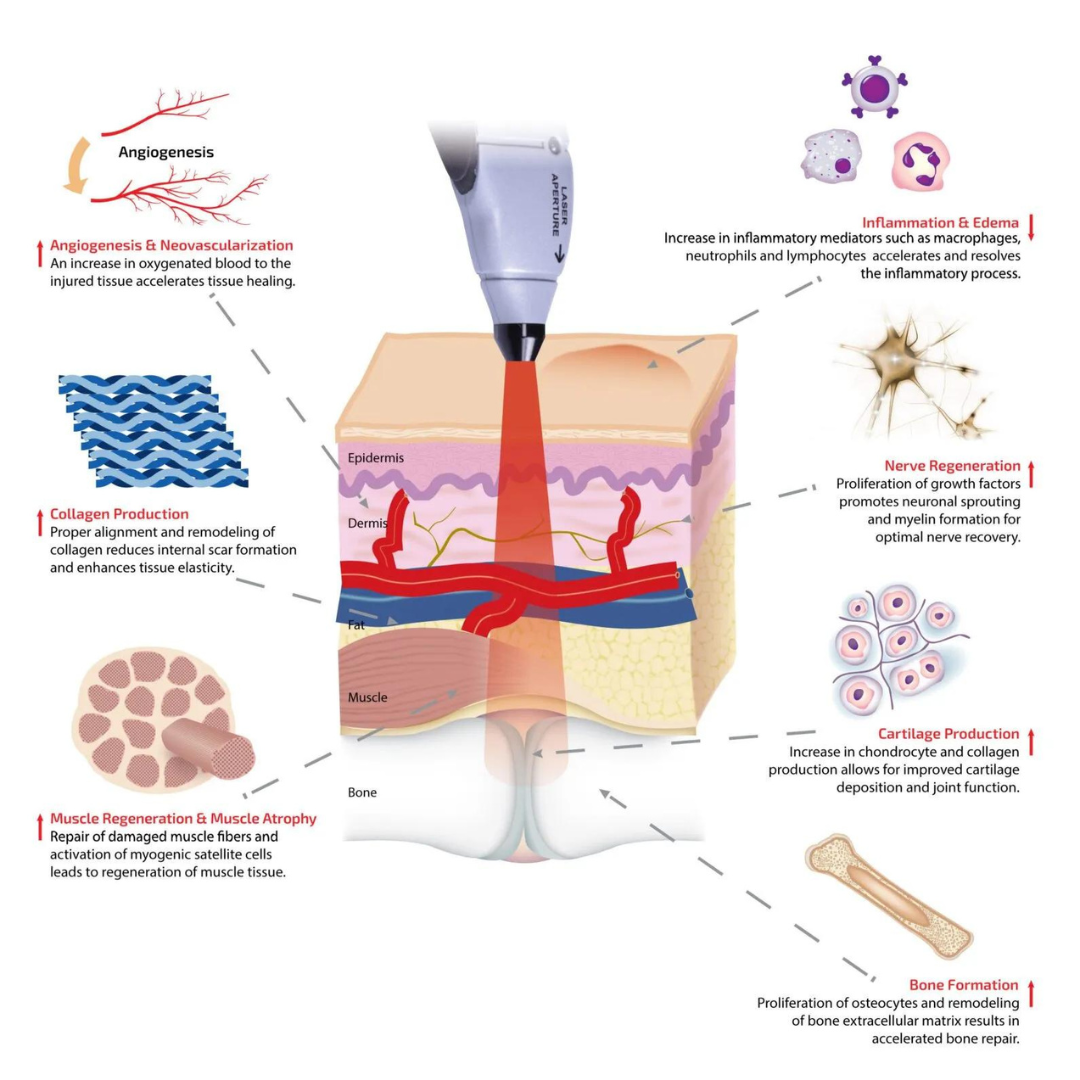Indicators on Photobiomodulation You Should Know
Wiki Article
The 3-Minute Rule for Photobiomodulation
Table of ContentsLittle Known Questions About Photobiomodulation.The Basic Principles Of Photobiomodulation Some Ideas on Photobiomodulation You Should KnowNot known Factual Statements About Photobiomodulation
Laser therapy is a clinical therapy that utilizes concentrated light to promote a process called. During PBM, photons get in the cells and interact with the cytochrome c complicated within mitochondria. This communication causes an organic waterfall of events that leads to a rise in cellular metabolic rate, which can as well as increase the healing process.There is agreement that the application of a therapeutic dose of light to damaged or useless tissue brings about a mobile reaction moderated by mitochondrial systems. Photobiomodulation. Researches have actually shown that these modifications can affect pain and swelling, along with, tissue repair
Adjustments in ATP, reactive oxygen species and nitric oxide comply with light absorption by Cc, O. These impacts are redox state and dosage reliant.

10 Easy Facts About Photobiomodulation Described
PBM gadgets have actually been removed for marketing by FDA via the Premarket Notification/510( k) process as adjunctive tools for the short-lived relief of discomfort. These clearances were based on the discussion of medical information to support such cases (Photobiomodulation). In this therapy, a source of light is placed near or in call with the skin, allowing the light power (photons) to penetrate cells where it interacts with chromophores found in cells causing photophysical and photochemical modifications that bring about modifications at the molecular, mobile and tissue levels of the bodySurprisingly, recent research study shows that light can enhance efficiency in regular tissues and cells. The prospective applications of PBMT are countless and are being explored experimentally at the fundamental scientific research, pre-clinical and professional level. The existing clinical uses are for the relief of discomfort and swelling and the treatment of sports injuries.

The treatment parameters and number of sessions required for PBMT depend on place and cause. PBMT typically needs greater than one treatment for optimal pain alleviation. It might take numerous therapies for the results to become evident. reports that it can take anywhere from 8 to 30 sessions for a therapy to be completely efficient, and some clients find it necessary to undergo therapy 2 to four times per week.
Some Known Details About Photobiomodulation
Therapy criteria for PBMT were originally developed using cells in vitro and in small animal designs. These treatment parameters normally had a low irradiance and fluence and functioned well for cutaneous applications. When clinicians started to utilize PBMT to deal with structures that were located much deeper in the body, they made use of these parameters with unfavorable outcomes.
We currently comprehend that these unfavorable researches was because of inaccurate device and therapy specifications for transcutaneous treatment of much deeper frameworks. Current breakthroughs in laser therapy gadgets and more study right into the suitable does discover here have dramatically boosted the results of PBMT. For dealing with deep tissues, the wavelength of light used identifies the depth of infiltration into a tissue.
It is crucial that a medical professional More about the author utilizes the proper wavelength of light and criteria to treat a problem. One wavelength and one collection of therapy parameters will not be reliable for all conditions. Unfavorable side results have not been reported from the use of PBMT.
The smart Trick of Photobiomodulation That Nobody is Discussing
In the initial experiment, Dr. Endre Mester, utilized cut rats and observing just how the laser affected their capacity to grow hair compared to the group that was not obtaining LLLT. He discovered that the group of mice obtaining LLLT were able to grow their hair back quicker than the group of computer mice that really did not receive LLLT (Hoon C, et al; 2012).This treatment is described this way to separate the distinction in between the lasers some occupations use to reduce (eg. Low-level light therapy is pain-free, non-invasive therapy.
LLLT has a biphasic feedback, meaning that reduced doses are generally seen to be much more helpful than higher doses. That being claimed, doses greater or lower than the optimum dose does not impact (Hoon C, et al; 2012). Therefore, it can be challenging to have studies on LLLT with a lot of criteria.
Some business combined the 2 (LED and laser) to provide a much more well-shaped therapy because lasers can penetrate much deeper site web than LED and infrared light (Norman Doidge, The Brain's Method of Recovery, 2015). Throughout treatment, the location that is being dealt with is revealed to LED light from a Biography, Flex Laser, which is at 660 nm wavelength, complied with by infrared light at 830-840 nm wavelength.
Report this wiki page